In this week’s blog post we will have a closer look at how to perform flow balancing simulation in Simcenter Flomaster. Flow balancing, or hydraulic balancing, is the process of optimizing the distribution of liquid or gas in a system to ensure satisfactory operation. Typically, this is done in systems containing piping networks or HVAC systems where the fluid is required to reach multiple points in a branching network with a specific mass flow rate. Flow balancing simulation may have many goals and can involve the reduction of overall energy consumption, ensuring that each point in the system receives the correct amount of fluid, and alleviate pipe stress due to high flow pressure. By adjusting the flow rates in different parts of the system, using for example valves to manage the amount of flow passing through, a system level balance can be achieved. Moreover, this type of analysis provides details concerning what design changes must be done to the system. Something the engineer later can implement in the actual system.
In the context of HVAC systems, for example, flow balancing can ensure that each area in a building receives the correct amount of heating or cooling, improving efficiency as well as improving the perceived overall comfort. For industrial applications, flow balancing studies can for instance facilitate that each part of the process receives adequate fluid flow, thereby improving productivity and efficiency.
Flow balancing simulation in Simcenter Flomaster is a specific simulation type provided for incompressible, compressible, and two-phase flow. The analysis allows users to specify desired flow rates as input parameters in system components of interest, and then run a simulation to perform pressure loss calculations for the individual components. The end result is a balanced system providing correct flow rates to the desired locations in addition to the geometrical results for how this was achieved, e.g. the required loss coefficient. For incompressible simulation flow rates are volumetric [m3/s], and for compressible simulation these should be specified as mass flow rate [kg/s].
The upcoming method provides an example on how flow balancing calculates the pressure conditions at the components, referred to as balancing components, and gives insight which will allow you to optimize components or set component data to achieve the desired flows in your system.
For the analysis to work, components which allow a flow rate to be entered as an input, have to be present in the system model. These components, referred to as flow specifying components, can take this input into account instead of the normal geometrical data. The type of flow specifying components allowed here are for example pipes, control valves, and pumps, to name a few. In addition to adding components which consider the user-supplied flow rates, balancing components also need to be part of the model. These may be the same component as the flow specifying component, such as an orifice, however they are necessary since the analysis requires a property to manipulate during the simulation, e.g. a diameter.
Some common mistakes when setting up this type of analysis involve over specification of the study. For example, placing multiple flow specifying components next to each other is not permissible since it is not possible to determine the pressure at the common node in between them. For nodes in general, you should set the status of the node according to what you are studying. For compressible systems, e.g. dry gas, the flow specifying component should be set to compressible, while for incompressible simulation, e.g. water, the flow specifying component should be set to incompressible. Another mistake is specifying a too high flow demand, leading to that negative loss coefficients can be calculated.
In the figure below, a useful tip for separating a pressure source from a flow specifying component is shown by placing a Discrete Loss component in between. This component will have low forward and reverse loss coefficients and a relatively high area to simulate a zero-loss component.
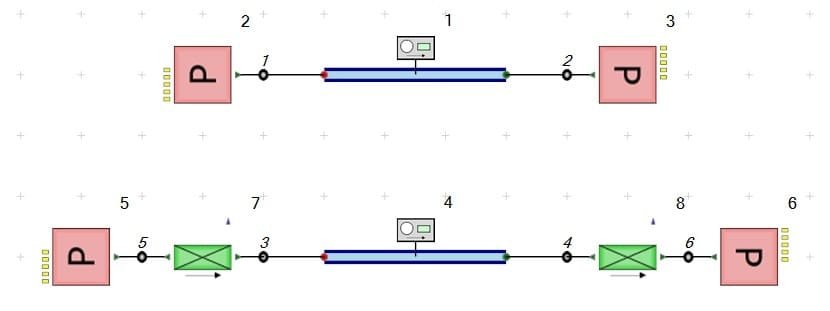
To showcase Simcenter Flomaster’s balancing capability, a simple system model of a fire protection system is given below. The system consists of a radial pump drawing water from a reservoir to the left of the image. Water is then pumped through several pipes and valves to later be split into different branches (to the right of the image). In three of these branches, an orifice and discrete loss has been added to represent a sprinkler nozzle, spraying water to the surroundings. The goal with this flow balancing simulation is to determine the diameter of the orifice throttling the nozzle in order to supply a desired volumetric flow rate.
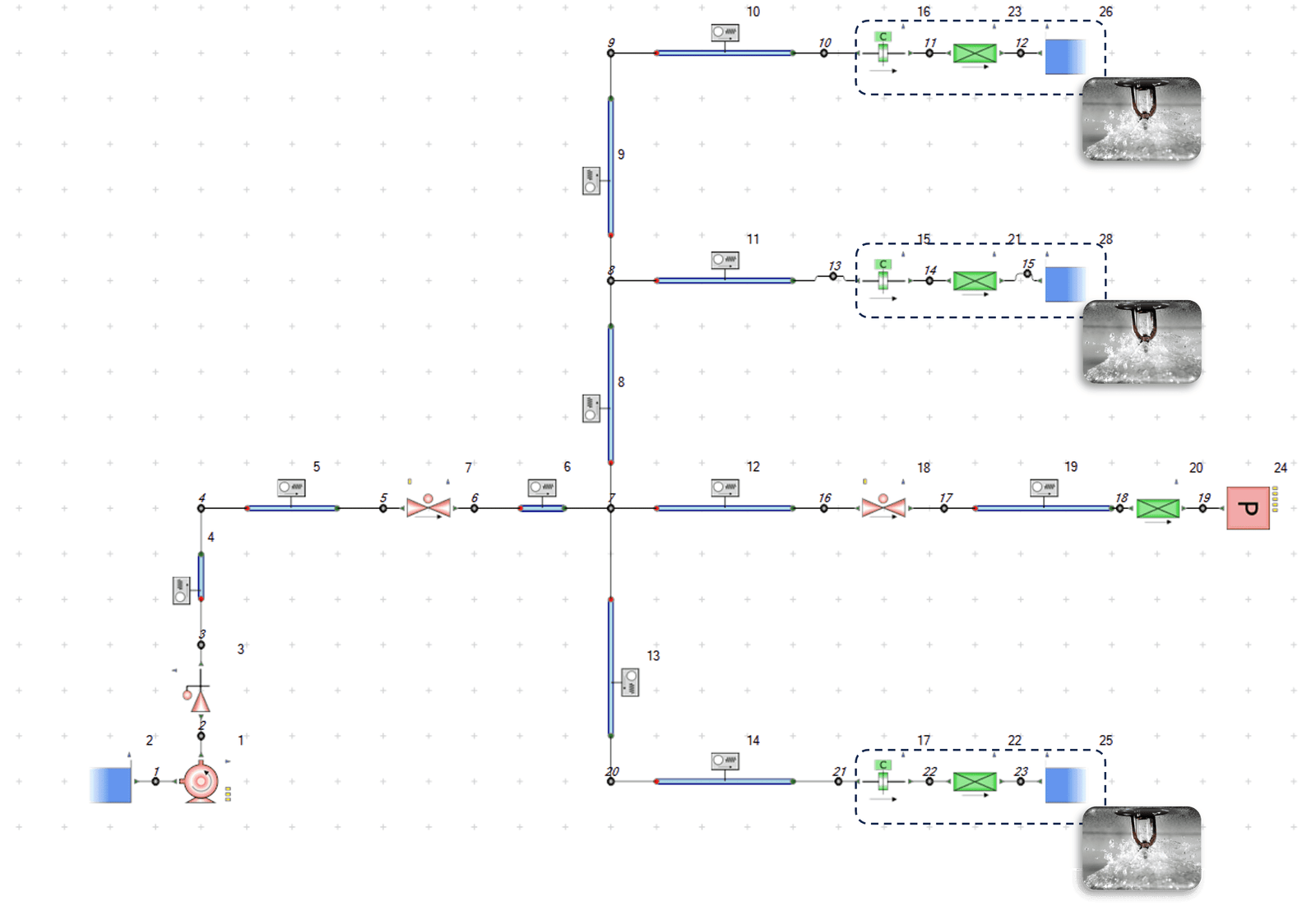
To size the orifices using flow balancing, the pipe diameter and the required volumetric flow rate must be entered for all components. For this simulation the sharp-edged conical orifice is used as both the flow specifying and flow balancing component. In this case a volymetric flow rate of 0.007 [m3/s] was set as the decired flow rate through all nozzels. The orifice diameter was left as “Not Set” as it will be calculated during the simulation.
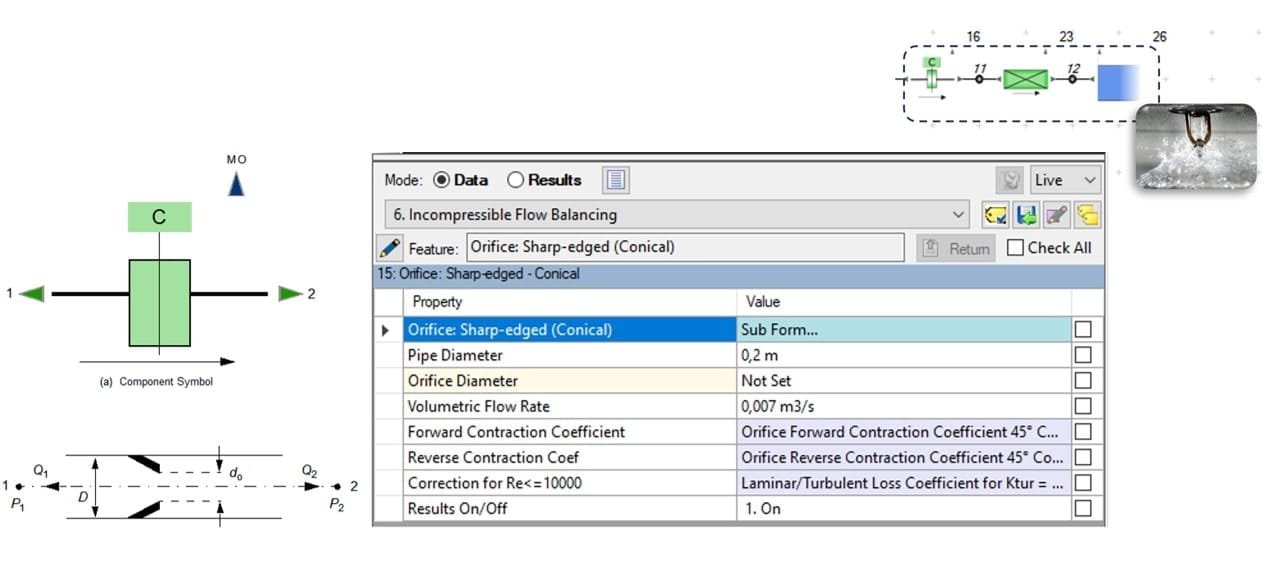
Once the specifications have been made to the model, the simulation type is configured as Incompressible Flow Balancing (No. 6) by selecting from the drop down menu, and then the simulation can be run. Simcenter Flomaster runs the flow balancing simulation first to determine the nozzle’s orifice diameter, and once this is complete a steady state simulation is repeated where the newly calculated diameter is used instead of the specified volumetric flow rate.
If for some reason the desired flow is not achievable during a simulation, the simulation will be stopped during the initial flow balancing calculation and the warning “Mass flow rate not achievable for the flow specifier” will be prompted.
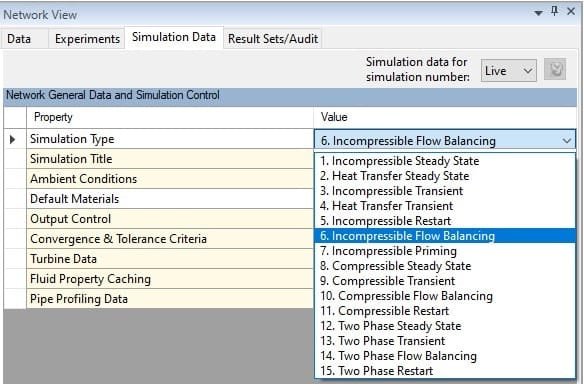
For this simple fire protection system, the flow balancing analysis determines that an orifice diameter close to 19 [mm] is suitable in order to reach a volumetric flow rate of 0.007 [m3/s] for all nozzles. In addition to checking if the flow rate actually was reached, other results of interest such as velocities, pressure drops, and loss coefficients, can be viewed. This can for example be done either by investigating a component’s individual results, or by clicking the Network Result Display to view results for the entire system, as was done below.
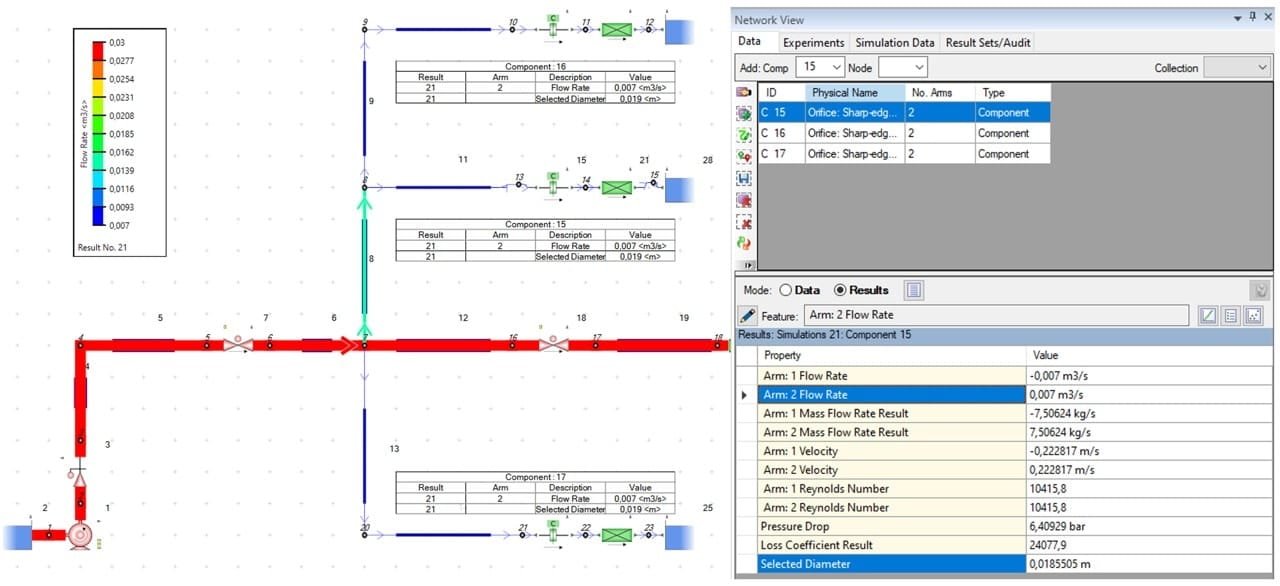
Flow rate can be specified in most components, however it is most appropriate to do so for components that are actually capable of providing the desired flow rate given the pressure conditions of the system. Ccomponents most suited for balancing flows are control valves, orifices, pipes, pumps, reservoirs and accumulators.
We hope that you have enjoyed this read, and any questions you might have may be sent to support@volupe.com. Since we are quickly approaching summer vacation, we will repost our most appreciated blog articles on linkedin during the upcoming weeks.
Author
Fabian Hasselby, M.Sc.
